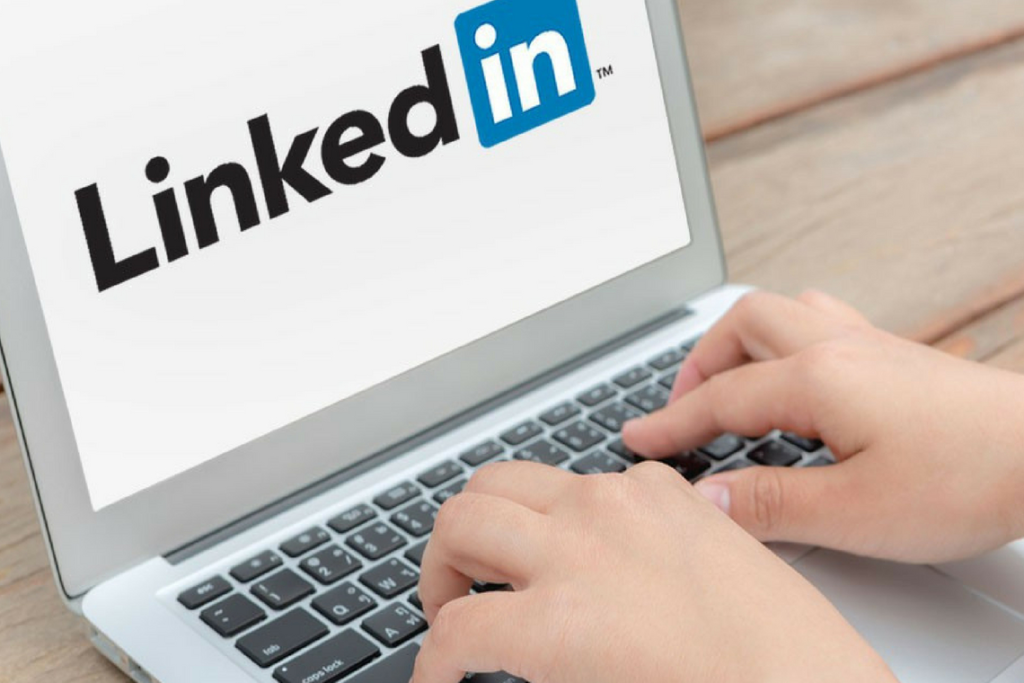
Creating a standout LinkedIn profile as a software developer is essential for establishing a professional online presence. A well-crafted profile not only showcases technical skills but also highlights personal branding, making it easier for potential employers and collaborators to recognize expertise. With the right approach, software developers can effectively communicate their experience, projects, and areas of specialization.

To capture attention, a profile should prioritize a strong headline and an engaging summary that conveys individual strengths and career aspirations. Key skills and endorsements from colleagues also play a crucial role in reinforcing credibility. By presenting a comprehensive overview of their abilities, developers can attract opportunities aligned with their professional goals.
Navigating the nuances of LinkedIn can be challenging, but understanding how to leverage its features effectively can set a developer apart. Practical tips and strategies can empower them to create a profile that resonates within the tech industry, enhancing visibility in a competitive job market.
Table of Contents
Understanding LinkedIn’s Importance for Software Developers

LinkedIn serves as a pivotal platform for software developers seeking to advance their careers. With millions of users, it provides a unique opportunity to connect with industry peers, recruiters, and potential employers.
Key Benefits of LinkedIn for Software Developers:
- Networking Opportunities: LinkedIn enables developers to build a professional network that can lead to job opportunities.
- Showcasing Skills: A well-crafted profile allows developers to highlight their technical skills, projects, and accomplishments.
- Job Search Platform: Many companies post job openings directly on LinkedIn, making it easier for developers to find relevant positions.
- Industry Insights: Following industry leaders and companies can help developers stay updated on trends and advancements.
- Reputation Building: Sharing articles, projects, and engaging in discussions can enhance a developer’s visibility and credibility in the tech community.
Using LinkedIn strategically can significantly enhance a software developer’s career trajectory. An optimized profile can attract recruiters and open doors to new opportunities. Emphasizing key aspects such as experience, education, and endorsements is crucial for a strong presence.
Setting Up the Fundamentals

Establishing a strong foundation for a LinkedIn profile is essential for software developers. Key aspects include selecting an appropriate profile picture, developing a professional headline, and writing a compelling summary. Each element significantly contributes to making a positive first impression.
Choosing the Right Profile Picture
A profile picture should convey professionalism and approachability. Developers are encouraged to use a high-resolution image, ideally taken in natural light.
Consider the following tips:
- Dress professionally: Wear attire suitable for the tech industry or your target workplace.
- Background matters: Opt for a simple, uncluttered background that enhances focus on the face.
- Smile naturally: A genuine smile fosters connection and approachability.
This image often forms the first point of contact with potential employers or connections, underscoring its importance.
Crafting a Professional Headline
The LinkedIn headline is crucial as it appears prominently beneath the name. Developers should succinctly convey their expertise and value proposition here.
Examples of effective headlines include:
- “Software Engineer Specializing in Java and Python Development”
- “Full-Stack Developer | Passionate About Innovative Web Solutions”
Using relevant keywords enhances visibility in searches. It is essential to balance specificity with clarity, allowing users to understand their expertise quickly.
Creating a Compelling Summary
A solid summary serves as a personal introduction. It should highlight significant achievements, skills, and career objectives while maintaining a professional tone.
Key components to include:
- Opening statement: Start with a powerful introduction that summarizes their professional identity.
- Highlight successes: Mention notable projects, technologies used, and contributions made.
- Future aspirations: Briefly outline career goals or areas of interest, providing direction for future opportunities.
Using first-person language can personalize this section, making it engaging. Aim for clarity and focus, ensuring it aligns with the overall profile narrative.
Detailing Your Experience

Effectively detailing experience on a LinkedIn profile is crucial for software developers. This section should showcase relevant work history, highlight key projects, and incorporate the technologies and tools used in their roles.
Listing Relevant Work Experience
When listing work experience, it’s important to focus on positions that align with current career goals. Each role should include the company name, duration of employment, and a brief description of responsibilities.
For example:
- Company Name: Tech Innovations Inc.
- Duration: June 2021 – Present
- Role: Software Developer
- Responsibilities: Developed user-friendly applications, collaborated with cross-functional teams, and participated in code reviews.
This framework ensures clarity and allows hiring managers to quickly assess qualifications.
Highlighting Key Projects
Incorporating key projects can significantly enhance a LinkedIn profile. Each project should include a brief description, the goals, and the outcomes achieved.
For instance:
- Project: Inventory Management System
- Description: Designed and implemented a management system to streamline inventory tracking for a retail client.
- Outcome: Reduced inventory discrepancies by 30% and improved operational efficiency.
Additionally, if a project involved teamwork, mention any leadership roles or collaboration strategies employed. This demonstrates both technical and soft skills.
Incorporating Technologies and Tools
Detailing technologies and tools utilized in past roles adds credibility to a LinkedIn profile. A dedicated skills section can list programming languages, frameworks, databases, and tools.
For example, a skills list might include:
- Languages: Python, Java, JavaScript
- Frameworks: React, Django
- Tools: Git, Docker, Jenkins
Including specific details about how these technologies contributed to project success can further showcase expertise. Demonstration of a solid technical foundation can attract potential employers looking for qualified candidates.
Showcasing Your Skills

A strong LinkedIn profile for a software developer effectively highlights key skills and relevant certifications. This enables potential employers to quickly recognize a candidate’s strengths and qualifications.
Identifying Your Top Software Skills
To effectively showcase skills, a developer should first identify the most relevant technical and soft skills. Technical skills may include programming languages, frameworks, and tools such as:
- JavaScript
- Python
- React
- SQL
Soft skills are equally important and can include teamwork, problem-solving, and communication. Listing these skills in the profile’s Skills section allows others to endorse them, adding credibility. Prioritizing the most sought-after skills for the specific industry or role increases visibility to recruiters.
Including Certifications and Endorsements
Certifications can significantly enhance a software developer’s LinkedIn profile. They provide proof of expertise in particular areas, such as cloud computing or cybersecurity. Notable certifications include:
- AWS Certified Developer
- Certified Kubernetes Administrator
- Google Professional Cloud Architect
Including these in the profile not only showcases dedication to ongoing learning but also sets the candidate apart from others. Additionally, endorsements from colleagues can bolster a profile’s legitimacy. Encouraging connections to endorse skills publicly allows for a stronger representation of abilities and can lead to better job opportunities.
Education and Continuous Learning

A well-crafted LinkedIn profile should highlight both formal education and ongoing learning efforts. This not only showcases technical skills but also demonstrates a commitment to personal and professional growth.
Adding Formal Education
When listing formal education, it’s essential to include degrees and relevant certifications. Start with the highest degree earned and proceed chronologically. For instance:
- Degree Type: Bachelor of Science in Computer Science
- Institution: University Name
- Graduation Year: 2020
Including honors or relevant coursework can provide additional context. For example, mentioning projects or research can illustrate specific skills.
Additionally, if the institution has a notable reputation in technology or programming, he or she should highlight that. This can enhance credibility and attract the attention of potential employers or connections in the tech industry.
Mentioning Online Courses and Workshops
Online courses and workshops have become essential for continuous learning. Including these on a LinkedIn profile demonstrates a proactive approach to skill development.
He or she should list notable platforms such as:
- Coursera
- edX
- Udacity
Formatting can be effective here. Present the course title, platform, and completion date, like this:
- Course Title: Full Stack Web Development
- Platform: Udacity
- Completion Year: 2023
Additionally, mentioning specific skills acquired, such as JavaScript frameworks or database management systems, adds depth. Participation in workshops or hackathons can also be included, as this reflects teamwork and practical application of skills.
Building a Network

Establishing a robust network on LinkedIn is crucial for software developers. It opens doors to new opportunities and enhances professional visibility.
Connecting with Industry Professionals
To build a strong network, it’s essential for software developers to connect with industry professionals. Begin by sending connection requests to colleagues, mentors, or peers met at conferences or online meetups. Personalize connection messages to increase acceptance rates.
Include a brief introduction and mention shared interests or experiences. Utilizing alumni networks can also be beneficial—alumni often prefer connecting with fellow graduates. Developers should also engage with former colleagues or classmates to maintain those relationships. Keeping an updated profile that highlights skills and achievements will attract connections. A comprehensive skills section can reinforce credibility and encourage professionals in the same field to connect.
Engaging with Groups and Discussions
Joining relevant groups on LinkedIn offers software developers a platform to engage in discussions with like-minded individuals. These groups can focus on specific programming languages, technologies, or industry trends.
Active participation is key; developers should share insights, ask questions, and comment on discussions. This not only boosts visibility but also establishes expertise in the field.
Contributing valuable information can lead to new connections and opportunities. Developers can also follow influential figures and companies related to their field, allowing them to stay updated on industry news and events. Engaging with these leaders by liking or commenting on their posts can foster important connections.
Obtaining Recommendations

Recommendations play a crucial role in enhancing a LinkedIn profile for a software developer. They provide social proof of skills and experiences that can attract potential employers.
To obtain worthwhile recommendations, the following steps can be taken:
- Identify Key Relationships: Consider connections such as former managers, colleagues, or clients who can speak positively about past work and skills.
- Request Thoughtfully: When asking for a recommendation, be specific about the skills or projects to highlight. This helps the recommender give a focused and meaningful endorsement.
- Provide Context: Sharing details about what the developer is currently pursuing can help the recommender understand what angle to take. A brief description of recent projects or career goals can be beneficial.
- Offer to Reciprocate: It’s often effective to offer to write a recommendation in return. This builds goodwill and encourages the other person to complete the request.
- Be Grateful: A thank-you message after receiving a recommendation is crucial. Gratitude reinforces relationships and enhances the likelihood of future recommendations.
Developers can showcase their abilities more effectively with solid recommendations. By following these strategies, they can encourage others to contribute supportive testimonials that elevate their LinkedIn profiles.
Customizing Your LinkedIn URL
Customizing a LinkedIn URL is an essential step for any software developer looking to enhance their online presence. A personalized URL makes it easier for recruiters and potential employers to find and remember their profile.
To customize the URL, follow these steps:
- Log In: He or she should log into their LinkedIn account.
- View Profile: Click on the “Me” icon and select “View Profile.”
- Edit URL: On the right-hand side, locate the “Edit public profile & URL” section. Click the pencil icon next to it.
Once in the settings, users can edit the URL. Here are some tips for creating a professional URL:
- Keep It Simple: Avoid complicated numbers or symbols.
- Include Name: Use their first and last name if possible, like
linkedin.com/in/john-doe. - Add Keywords: Consider including relevant terms, such as “softwaredeveloper.”
After making the changes, it is crucial to save them. The new URL should reflect their professional brand, making it easy to share on resumes or business cards.
By following these steps, developers can craft a clear and accessible LinkedIn URL that supports their career goals. Customization reflects professionalism and attention to detail in their online branding.
Maintaining Profile Activity

Engaging consistently on LinkedIn can significantly enhance visibility and attract opportunities for a software developer. Active participation demonstrates expertise and keeps the profile relevant in a dynamic industry.
Sharing Industry News
Regularly sharing industry news helps maintain an active presence. Developers can follow relevant publications and influencers to stay informed. Curating interesting articles to share not only shows awareness of current trends but also provides valuable content to connections.
When sharing, it’s beneficial to add personal insights or commentary. This approach encourages discussions, making the posts more engaging. Additionally, developers should utilize hashtags related to technology and software development to reach a broader audience.
Maintaining a balance by sharing both original content and resharing others’ posts ensures a diverse feed. It is advisable to post at least once a week to keep the profile visible.
Publishing Articles on LinkedIn
Publishing original articles on LinkedIn provides an opportunity to showcase expertise and thought leadership. Developers can write about recent projects, challenges faced, or tutorials on specific technologies. This not only demonstrates skills but also establishes credibility within the community.
Well-structured articles should include clear headings, bullet points, and visual aids like diagrams or code snippets. This makes the content more digestible and appealing. Engaging titles can draw readers in, increasing the likelihood of shares and comments.
Authors should respond to comments on their articles to foster a sense of community. By regularly creating content, they can keep their profiles active while contributing positively to the professional landscape.



